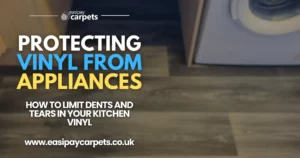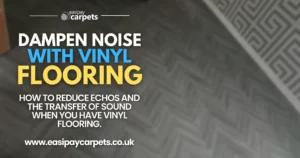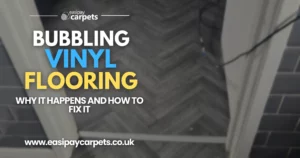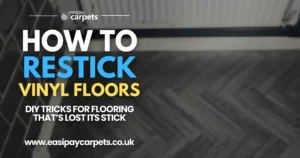
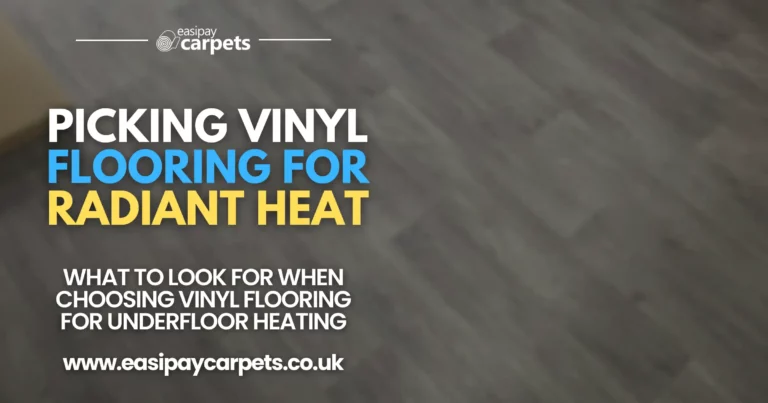
Can Vinyl Flooring Be Installed Over Radiant Heat?
Vinyl flooring has gained popularity for its affordability, versatility, and durability, making it a common choice in many homes. But when it comes to radiant heating systems, many homeowners wonder if vinyl flooring is up to the challenge. If you’re considering vinyl over radiant heat, it’s essential to understand the compatibility, potential benefits, and what steps you need to take to ensure a long-lasting, safe installation. Here’s everything you need to know to help you make an informed decision.
Understanding Radiant Heat Systems
Radiant heat works by warming the floor surface, creating a cosy atmosphere that eliminates the need for forced-air heating. Unlike traditional systems that heat the air, radiant heat provides a consistent warmth directly through the floor.
There are two main types of radiant heat systems: Hydronic (water-based) and Electric. Hydronic systems circulate heated water through tubes under the floor, while electric systems use cables or mats to generate heat. Each system has unique installation requirements that can impact the choice of flooring, including vinyl.
Can Vinyl Flooring Handle Heat?
In general, vinyl flooring can handle moderate heat. However, extremely high temperatures can cause it to warp, lose adhesion, or fade over time. Because radiant heating systems deliver heat evenly, they are typically compatible with vinyl if installed and maintained properly.
With the right care, vinyl flooring over radiant heat offers several benefits. Vinyl, known for being budget-friendly and easy to maintain, combines well with radiant heat to provide a warm and comfortable surface during colder months. Many types, such as luxury vinyl planks (LVP) and vinyl tiles, are also easy to install, giving homeowners flexibility with design and installation. However, potential drawbacks include vinyl’s sensitivity to higher temperatures and the risk of moisture exposure from hydronic systems. Proper precautions can help mitigate these issues.
Preparing for Installation
Before installing vinyl over radiant heat, it’s essential to check for compatibility. Not all vinyl products are rated for use with radiant heating, so verify that the product you choose can handle the heat levels generated by your system. Most LVP and LVT are suitable, while some standard vinyl sheets may not be.
Keep in mind that the radiant heat should not exceed 85°F (29°C), as temperatures above this level could lead to warping, discolouration, or other damage to the vinyl. Gradual temperature increases are also recommended to prevent issues with expansion or adhesion.
Another important factor is the underlayment. For radiant heat, using an underlayment that can handle higher temperatures and help with heat distribution is crucial. An underlayment specifically rated for heated flooring will provide better insulation, protect the vinyl, and allow for even heat flow across the surface.
Steps for Installing Vinyl Flooring Over Radiant Heat
1. Inspect and Prepare the Subfloor
Before installing any flooring, make sure the subfloor is level, dry, and compatible with both the radiant heating system and vinyl flooring. This will help avoid potential issues with unevenness or moisture.
2. Choose the Right Vinyl Flooring
Once the subfloor is ready, select vinyl flooring specifically rated for radiant heat. Many types of luxury vinyl plank (LVP) or tile (LVT) options work well, but always double-check the manufacturer’s guidelines to confirm compatibility.
3. Install the Radiant Heat System First
If your radiant heating system is new, allow it to run and stabilize before installing the flooring. This can help avoid shifting or settling after the flooring is laid down.
4. Acclimate the Vinyl Flooring
Vinyl flooring, like many materials, benefits from a 48-hour acclimation period in the room where it will be installed. This can prevent issues like expansion or contraction after the installation is complete.
5. Gradually Increase the Temperature
Once the vinyl flooring is installed, turn the radiant heat on slowly. This gradual increase helps prevent sudden temperature shocks, which can potentially damage the vinyl flooring over time.
Maintenance Tips for Vinyl Flooring with Radiant Heat
To maximize the lifespan and performance of vinyl flooring over radiant heat, avoid extreme temperature fluctuations. Sudden changes in temperature can cause vinyl to warp or buckle, impacting its durability. Cleaning with vinyl-safe products is also essential to avoid harsh chemicals that could damage the surface.
Since hydronic systems carry a slight risk of leaks, regularly inspect for any signs of moisture or changes in flooring texture. If you notice any damp spots or shifts in texture, this could indicate an issue with the system that needs immediate attention.
Easipay Carpets can help you get brand new flooring without the high up-front cost – by simply letting you spread the cost of the flooring over time instead. There’s no interest on our plans so you aren’t spending a penny more than you would buying it outright and we include underlay, door trims, carpet grippers and laminate beading for free. Prices start from just £10 per week!
It starts with a free home appointment and quote, to get booked in at a time that suits you, tap the “Get Started” button below and fill out the contact form!
Still Got Questions? Here's 10 FAQs!
Generally, yes, but electric systems and water-based hydronic systems are best suited. Always check product compatibility.
Yes, it should not exceed 85°F (29°C) to avoid damaging the flooring.
Some manufacturers void warranties if vinyl is installed over radiant heat. Check with your flooring provider for warranty specifics. Some flooring is rated for underfloor heating, others aren’t so it’s always best to check.
Properly installed vinyl over radiant heat can be durable, but extreme temperatures can reduce its lifespan.
Vinyl sheets are generally less compatible due to heat sensitivity. Planks or tiles are usually recommended.
Yes, use a radiant-heat-compatible underlayment to maximize heat distribution and protect the vinyl.
Use mild cleaners specifically made for vinyl to avoid damaging the surface.
Tile is naturally more heat-resistant, but vinyl is cost-effective and can work well if properly managed. You could also look into SPC flooring, which Easipay Carpets do offer on our payment plans. Though more expensive, it’s much more durable than vinyl flooring, completely waterproof and ours is also rated for underfloor heating.
Click-lock systems are typically safe with radiant heat, though acclimating them is crucial.
If temperatures are kept within limits, discoloration is rare, but sustained high heat can cause fading.

